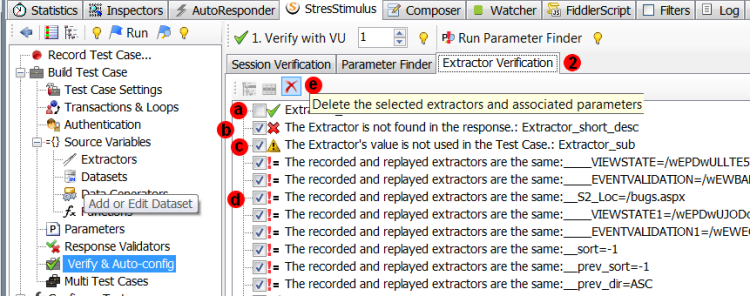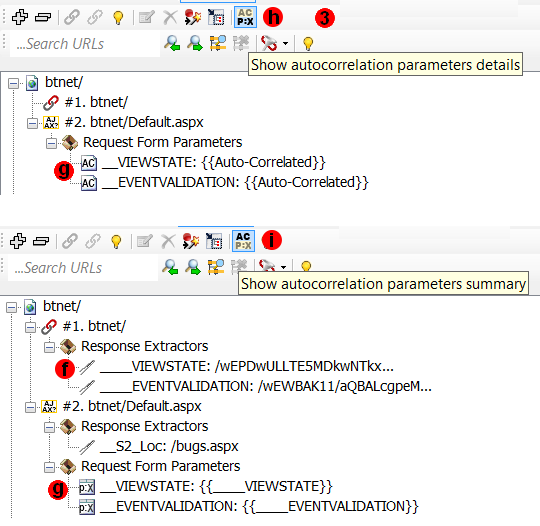- Killer autocorrelation. In v 3.7, the autocorrelation is completely re-engineered to find the majority of dynamic parameters automatically. It finds and correlates hidden dynamic parameters in the query string, body, header or restless URL in all web application platforms, including binary or XML messages. In simple and medium tests cases the entire parameterization is configured automatically. Up to 80% of time spent configuring complex test cases is saved as well.
- Handling parameters and test optimization. You can reduce performance overhead by deleting unnecessary parameters. The autocorrelation process creates extractors and parameters to avoid test execution errors. However, some of these parameters may be unnecessary. The Verify command generates an Extractor Verification Tree where every extractor has one of the four statuses:
- The extractor is OK.
- The extractor is not found in the response.
- The extractor's value is not used in the Test Case.
- The recorded and replayed extractors are the same.
The extractors with statuses b, c and d are automatically selected. They can be deleted to decrease load generators overheads and possible errors. To delete them, click Delete (e) on the toolbar.

- Autocorrelation transparency. Autocorrelation script is available for review. An autocorrelation parameter consists of an autocorrelation extractor (f) and a parameter (g). By default, the extractor is hidden and the parameter is marked as {{Autocorrelated}}
To display the hidden details, click Show autocorrelation parameters details on the test case tree toolbar. The extractors will un-hide and their names will be displayed next to the corresponding parameters. To switch back to the default view, click Show autocorrelation parameters summary.

Note: Autocorrelated extractors and parameters have names that begin with two underscores.
- Data generator improvement. Previously, data generator values were evaluated on every use. It caused issues with data integrity in some cases. For example, a web form requires to enter an email address twice for verification purposes. In such situations, two different random email addresses will be generated, and the test will fail due do user's entry mismatch.
In the new version, data generator values are evaluated once per iteration for every VU and persist throughout the iteration. This allows to use the same random value more than once if it is necessary.
Note: If you need to generate two different random values per VU-iteration, then you can create two data generators.
- More request performance metrics. In the request details section, the average request body size column was added to the request detail grid.
To navigate to other parts of the v3.7 release notes, click the links below:
StresStimulus 3.7 beta is available here.